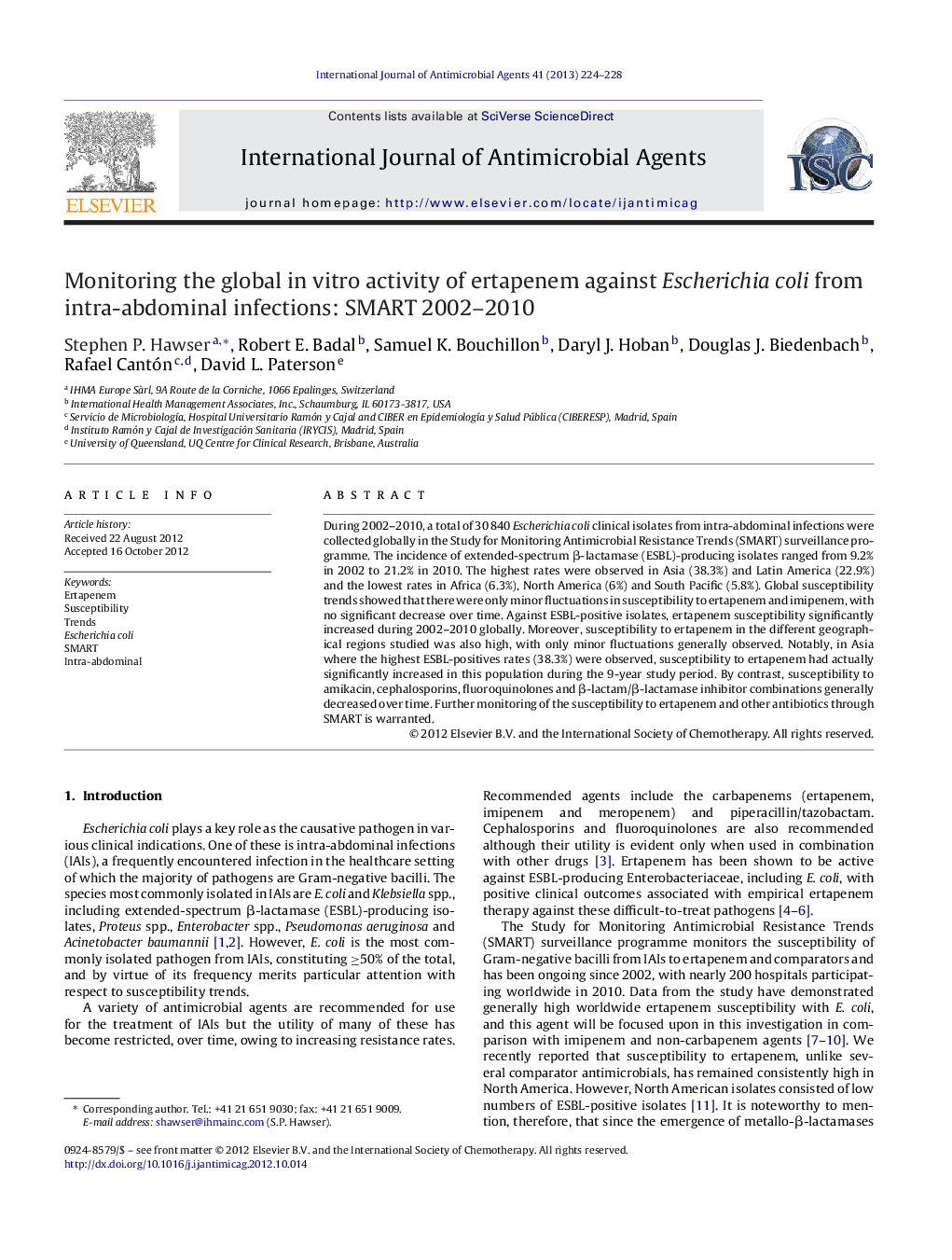| Article ID | Journal | Published Year | Pages | File Type |
|---|---|---|---|---|
| 3359233 | International Journal of Antimicrobial Agents | 2013 | 5 Pages |
During 2002–2010, a total of 30 840 Escherichia coli clinical isolates from intra-abdominal infections were collected globally in the Study for Monitoring Antimicrobial Resistance Trends (SMART) surveillance programme. The incidence of extended-spectrum β-lactamase (ESBL)-producing isolates ranged from 9.2% in 2002 to 21.2% in 2010. The highest rates were observed in Asia (38.3%) and Latin America (22.9%) and the lowest rates in Africa (6.3%), North America (6%) and South Pacific (5.8%). Global susceptibility trends showed that there were only minor fluctuations in susceptibility to ertapenem and imipenem, with no significant decrease over time. Against ESBL-positive isolates, ertapenem susceptibility significantly increased during 2002–2010 globally. Moreover, susceptibility to ertapenem in the different geographical regions studied was also high, with only minor fluctuations generally observed. Notably, in Asia where the highest ESBL-positives rates (38.3%) were observed, susceptibility to ertapenem had actually significantly increased in this population during the 9-year study period. By contrast, susceptibility to amikacin, cephalosporins, fluoroquinolones and β-lactam/β-lactamase inhibitor combinations generally decreased over time. Further monitoring of the susceptibility to ertapenem and other antibiotics through SMART is warranted.
